This is a mosaic of the caloris basin and its surrounding area. The Caloris Basin is closest to the sun when Mercury is at the closest point in its orbit to the sun.
Click on image for full size
NASA
The Caloris Basin
The Caloris Basin is the largest feature on the surface of Mercury.
This crater was formed by the impact of a large meteorite in the early formation of the solar
system. We only know what half of the crater looks like, because
the other half was in darkness when Mariner 10 flew by the planet.
Surrounding the impact site are concentric ridges within relatively
smooth plains probably brought about by renewed volcanic activity
which started after the impact. On the other side of the planet,
directly across from the basin, is a region initially described as
the "weird" terrain, where a chaotic mix of hills and fractures is
present. This may have been produced in response to shock waves
which traveled to this point on the surface following the Caloris
Basin impact.
You might also be interested in:

How did life evolve on Earth? The answer to this question can help us understand our past and prepare for our future. Although evolution provides credible and reliable answers, polls show that many people turn away from science, seeking other explanations with which they are more comfortable.
...more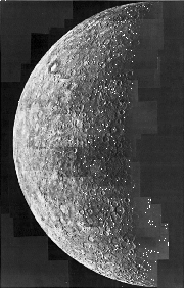
A wide variety of craters ranging in size from 100 meters to 1300 km across can be seen in the Mariner 10 images of Mercury's surface. These include: (1) craters in young terrain, (2) double craters,
...more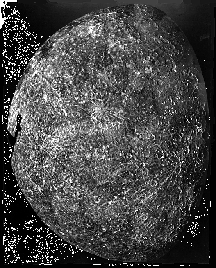
The surface of Mercury has numerous interesting features, including a variety of craters, ridges, and terrains ranging from heavily cratered to nearly crater free. These features, and their location across
...more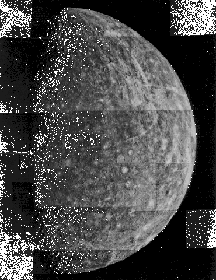
Images of the surface of Mercury obtained by Mariner 10 showed a planet covered with craters, looking very much like the Earth's Moon. During its three passes by the planet, Mariner 10 took pictures of
...more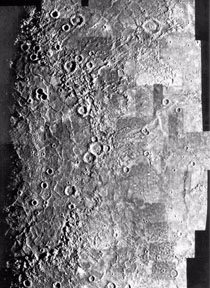
The Caloris Basin is the largest feature on the surface of Mercury. This crater was formed by the impact of a large meteorite in the early formation of the solar system. We only know what half of the
...more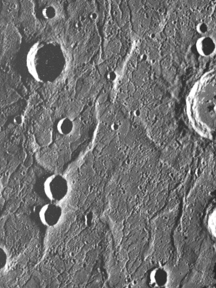
Wrinkle ridges on the surface of Mercury are thought to have been caused by the shrinking of the surface following the cooling and shrinking of the core of the planet. As the core cooled and shrank, the
...more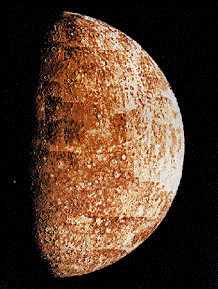
Mercury, like the other planets, is believed to have formed in the earliest stage of the evolution of the solar system as dust came together to form even larger clumps and eventually small planets or
...more
Mercury, the innermost planet of the solar system, is a little bigger than the Earth's Moon. The surface of the planet is covered with craters, like the Moon, but temperatures there can reach over 80
...more













